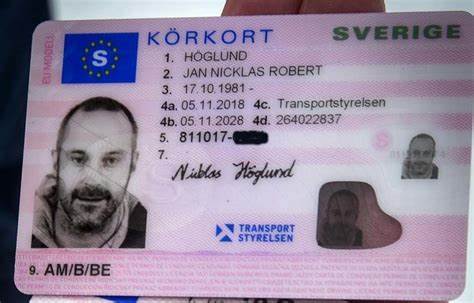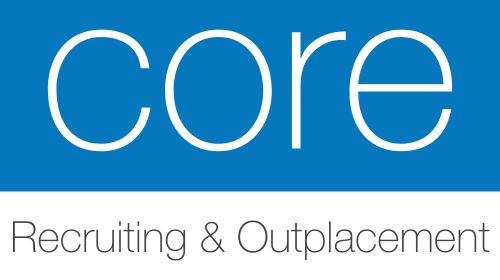
Online Körkort Till Salu
FollowOverview
-
Founded Date March 28, 1958
-
Sectors Estate Agency
Company Description
Speak “Yes” To These 5 Buy Driving License Tips
The Comprehensive Guide to Legally Obtaining a Driving License
Driving is an essential skill for numerous, providing the flexibility to take a trip where and when you desire, often making life easier and pleasurable. However, obtaining a driving license is a process that needs understanding, perseverance, and adherence to legal procedures. This guide aims to offer a detailed overview of the actions one should follow to legally acquire a driving license, highlighting important considerations and frequently asked questions to guarantee a smooth and hassle-free experience.
Understanding the Basics
Before diving into the application procedure, it’s essential to comprehend the fundamental requirements and types of driving licenses readily available. Driving laws vary significantly from nation to country, and even within different states or provinces within the exact same country. Normally, there are a number of types of driving licenses, including:
- Learner’s Permit: This is frequently the initial step while doing so, permitting new motorists to acquire experience under supervision.
- Provisional License: Issued after passing a standard driving test, this license usually features limitations and is a stepping stone to a complete license.
- Full Driver’s License: Once all the required requirements are satisfied, motorists can obtain a full license, which provides complete driving benefits.
- Business Driver’s License (CDL): Required for those who wish to operate commercial automobiles, such as trucks or buses.
Steps to Obtain a Driving License
1. Research Local Driving Laws
The first step in acquiring a driving license is to investigate the particular requirements in your location. Go to the main website of your regional Department of Motor Vehicles (DMV) or equivalent agency to find detailed details about the licensing process, consisting of age constraints, required files, and costs.
2. Prepare Required Documentation
Each jurisdiction has its own set of files that should be sent to use for a driving license. Typically needed documents include:
- Proof of Identity: A passport, birth certificate, or state-issued ID.
- Evidence of Residency: Utility bills, lease contracts, or other official documents that confirm your address.
- Social Security Number (if relevant): In some countries, a social security number or equivalent is required for recognition.
- Vision Test Results: Some places require a vision test before providing a student’s license or license.
3. Take a Driver’s Education Course
Numerous states and nations require new motorists to complete a driver’s education course. These courses are designed to teach the guidelines of the roadway, traffic laws, and safe driving practices. They can be finished online or in a classroom setting and typically consist of both theoretical and practical elements.
4. Obtain a Learner’s Permit
When the needed documentation is prepared and the driver’s education course is finished, the next action is to obtain a student’s license. This typically includes checking out the DMV or sending an application online. You will also require to pass a written test that covers traffic laws and driving knowledge.
5. Practice Driving
With a learner’s permit, you can begin practicing driving under the guidance of a licensed grownup. This is an important action in developing your confidence and abilities behind the wheel. It’s likewise crucial to acquire experience in various driving conditions, such as night driving, highway driving, and driving in harsh weather.
6. Arrange and Pass the Driving Test
After acquiring adequate driving experience, you can schedule a driving test with the DMV. The test will assess your ability to securely run a lorry and follow traffic laws. You will need to bring an effectively signed up and insured car to the test, and the examiner will assess your driving skills on an established route.
7. Look for a Provisional License
If you pass the driving test, you will usually receive a provisional license. This license might feature restrictions, such as a curfew or a limitation on the variety of travelers you can have in the car. These limitations are developed to lower the threat of accidents and help new drivers acclimate to the road.
8. Upgrade to a Full License
As soon as you have held a provisional license for the necessary period and met any extra requirements, you can upgrade to a complete driver’s license. This process typically involves a basic application and might need a retest or extra paperwork.
Tips for a Successful Application
- Start Early: Begin the process as quickly as you fulfill the age requirement to offer yourself adequate time to prepare.
- Stay Informed: Keep up-to-date with any modifications in driving laws or DMV procedures.
- Practice Regularly: Consistent practice is key to developing confidence and enhancing your driving abilities.
- Stay Calm During the Test: Anxiety can affect your efficiency, so take deep breaths and stay focused.
- Follow DMV Instructions: Pay attention to the instructions supplied by the DMV and the inspector throughout your test.
Frequently Asked Questions (FAQs)
Q: What is the minimum age to use for a student’s authorization?
A: The minimum age differs by jurisdiction. In the United States, it generally varies from 15 to 16 years of ages. In the UK, the minimum age is 17. Inspect your regional DMV website for particular details.
Q: Can I get a driver’s license online?
A: Some jurisdictions enable you to finish parts of the application procedure online, such as submitting forms and scheduling tests. However, you will usually require to check out a DMV office in individual to submit required documents and take the driving test.
Q: What occurs if I stop working the driving test?
A: If you stop working the driving test, you can usually retake it after a certain period. This period differs by area, however it is frequently a couple of weeks. It’s an excellent concept to practice more before retaking the test to enhance your opportunities of success.
Q: Can I drive alone with a student’s license?
A: No, a learner’s permit normally needs you to be accompanied by a certified grownup, usually over 21 years of ages, who is seated in the front guest seat.
Q: Is a vision test needed to get a driving license?
A: Yes, the majority of jurisdictions require a vision test to guarantee that you can safely run a lorry. You can typically take this test at the DMV or with an authorized optometrist.
Q: How long does it require to get a full driver’s license?
A: The time required to get a full driver’s license differs depending on your jurisdiction and the specific actions included. Typically, it can take several months, including the time required to finish a driver’s education course, hold a learner’s authorization, and pass the driving test.
Q: Can I utilize a provisional license to drive for work?
A: It depends on the limitations put on your provisionary license. Some provisional licenses permit you to drive for work, while others might have specific constraints. Inspect your license for details or contact the DMV for clarification.
Q: What is the distinction between a learner’s permit and a provisionary license?
A: A student’s license is the first phase of the licensing procedure and allows you to drive just under guidance. A provisionary license, on the other hand, grants you more driving benefits however may still have some restrictions, such as a curfew or guest limits.
Q: Can I request an industrial driver’s license (CDL) without a full driver’s license?
A: No, you generally need a full driver’s license before applying for a CDL. A CDL is a customized license that requires additional training and testing, and KöPa A2 KöRkort it is just provided to those who have actually shown the capability to safely operate a basic car.

Q: What should I do if I lose my driving license?
A: If you lose your driving license, you ought to report it to the DMV and look for a replacement. You might require to offer proof of identity and pay a fee. It’s also a good idea to alert your insurer and any other appropriate celebrations.
Getting a driving license is a significant milestone that opens up new opportunities and increases independence. By following the actions outlined in this guide and remaining notified about regional laws and requirements, you can ensure a smoother and more effective licensing procedure. Keep in mind that driving is a serious duty, and taking the time to discover and practice is vital for your safety and the safety of others on the road.
